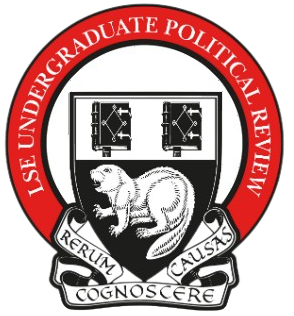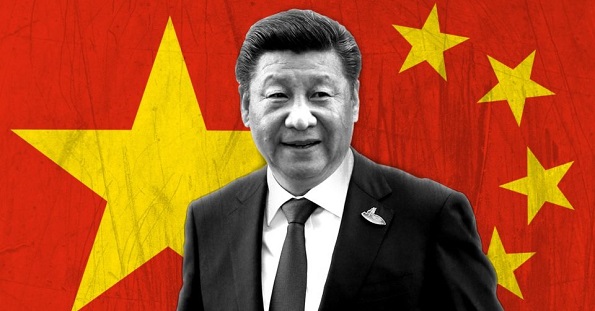“What are the effects of the rise of China on the present world order?”
This article was written by Joseph McGrath, year 13 student at the Judd School.
The rise of China onto the forefront of the world stage is both remarkable and concerning, signalling at the very least a threat to the present world order, currently dominated by the ever-present hand of the United States. Since the Second World War, the US has acted to cement its place at the apex of this world order, with its sphere of influence – economically, politically and militarily – extending across the globe. With the collapse of the Soviet Union in 1991, China has – as a consequence of its extraordinary economic transformation – filled the void to become the new pretender to the US’s throne. Consequently, to understand the effects of China’s rise, it must be considered in context with the United States. Through Xi’s recent takeover of the Chinese Communist party as a long-term quasi-dictator, and through the recent provocative actions of the Chinese military in the disputed South China Sea region, the issue of China and its future role is becoming ever pertinent (The Economist, 2018). To truly address and consider this, one must first look at the current global situation.
There are three key domains with which influence can be ascertained, and therefore which must be considered: economic, military, and political power.
Economically, China is projected to “overtake the US in terms of aggregate GDP in the next few decades”, and as a result represents a greater economic threat than that faced by the US in the past (Shatz, 2016, p85). Throughout the Cold War, the US economy was around twice the size of the USSR, and consequently it was consistently able to out compete them through its financial muscle; this forced the USSR to unsustainably spend beyond its means (CIA, 1999). However, China in this respect, is a different animal, with the Chinese economy around two-thirds the size of the US, and annual growth being around six percent greater (UN GDP Database, 2016). Having said this, as the Shanghai Composite Index crash in 2015 showed, the Chinese economy is perpetually volatile. Thus, when coupled with the ever-present $7trillion GDP gap when compared to the China poses only a minor threat to US economic suzerainty, at least in the short-term.
Militarily, the US stands head and shoulders above the rest of the world. Spending $610billion annually, its expenditure is equal to that of the next 8 countries combined, dwarfing that of second placed China which expends $228billion (Spiri Database, 2018). However, while China is exceedingly unlikely to overtake general US global military dominance, its regional threat to US hegemony in Southeast Asia is nonetheless significant. Over the past half-decade or so, as a consequence of President Xi’s aggressive foreign policy, China have sought to militarise the South China Sea. Such examples of this include the recent occupation of the Paracel Island chain, within which China has placed a large number of both missile launcher installations and nuclear-capable bombers respectively (The Guardian, 2018). Thus, even if China is incapable of competing against the US on a global scale, its questioning of the regional balance threatens to destabilise the wider, hegemonic military dominance of the US.
Politically, the situation is far less clear cut, not least because political influence is often derived from economic and military power. Politically allegiances are often more ergodic in nature with dependency on ever-changing ideological shifts resulting in less reliability in determining the possible impact of China to the status quo. However, since political influence acts as both the means to and the ultimate goal of countries in developing their respective spheres of influence, it is nonetheless an important consideration. Arguably the most notable of China’s recent political alliances is that with Pakistan and Bangladesh through the ‘Belt And Road Initiative’ (BRI; formerly known as ‘One Belt, One Road’), whereby China has managed to extend beyond its traditional sphere of influence, encroaching on that of the West (Ren, 2018). Such new relationships show China to be a country being successful in actively extending its influence. Yet despite this, in the main, China’s recent provocations appear to have served to strengthen the existing US allegiances in countries such as Vietnam and Japan in the short-term (Grietens, 2013).
Therefore, once all three of these elements are taken into account, it appears China does hold the means and power to actively pursue and possibly fulfil a policy of world-dominance. Invariably the superior power of the United States, while not insurmountable, does serve to act as a sizeable barrier to any such prospects. China have the might to possibly affect the world order in a meaningful way, but will they?
The answer to this is dependent on Chinese foreign policy, and based on current evidence, it seems as if they’ll certainly try. President Xi, in a speech to China’s Communist Party Congress in October 2017, called for China, “to transform itself into a ‘mighty force’ that could lead the entire world on political, economic, military… issues” (The Guardian, 2017, p2). This was all the more salient given Xi’s recent removal of China’s two-term limit to pave the way for lifetime rule, as such rhetoric is unlikely to abate in the near future, with it increasingly being backed up by substantive action. Since the construction of the 1860km Tanzam railway linking Zambia and Tanzania in the 1960s under Chairman Mao, China has looked to foreign investment as one of its primary means of achieving global reach (Financial Times, 2017). By 2014, China-Africa trade had grown to $220billion from $10billion in 2000, and in addition to this the current ‘Belt And Road Initiative’ orchestrated by China is reported to cost anywhere from $900billion to $4trillion; either way, this is an extraordinarily large sum (Pilling, 2018). Such projects show China has no intentions on letting up on its lofty ambitions.
The most recent and increasingly pertinent method utilised by Xi’s China, is that of forceful military intimidation. The aforementioned developments in the South China Sea regarding the militarisation of disputed territory demonstrates the starkest of all examples as to China’s new, brutish foreign policy. With significant payoffs come significant costs, yet it appears Xi, as the figurehead of China for years to come, is willing to risk in order to gain. The bold moves serve to test the US’s resolve, with tensions and rhetoric ramping up between Trump’s administration and that of Xi, leading to many fears that the world could be on the beckoning edge of a new, 21st century Cold War (New York Times, 2017). Only time shall tell whether these fears will materialise, but one thing is clear: China isn’t afraid to disrupt the status quo.
Ultimately, while no one can know for certain the long-term implications of China’s rise, it is safe to say that the current world order has been disrupted; the US really does have a new pretender to its throne. The short-term impact of this rise is most likely limited to China’s attempts to become the predominant power in Asia. Yet it is likely that the rise of China and the accompanying bullishness of its leadership, will force the US to consolidate its economic, political, and military alliances. China’s rise is most likely to be a short-term disruption to the long-consolidated world order of the West under the US, yet future developments will demonstrate whether such disruption will be morph into a sustained assault on Western hegemony.
Bibliography
Central Intelligence Agency. 1999. ‘A Comparison of the US and Soviet Economies: Evaluating the Performance of the Soviet System’. Central Intelligence Agency. [online]. Available at: <https://www.cia.gov/library/readingroom/docs/DOC_0000497165.pdf> [Accessed 19 Jun. 2018]
Greitens, S. (n.d.). ‘U.S.-China Relations and America’s Alliances in Asia’. Brookings. [online] Available at: <https://www.brookings.edu/opinions/u-s-china-relations-and-americas-alliances-in-asia/> [Accessed 19 Jun. 2018]
Perlez, J. 2018. ‘Xi Jinping Extends Power, and China Braces for a New Cold War’. The New York Times. [online] Available at: <https://www.nytimes.com/2018/02/27/world/asia/xi-jinping-china-new-cold-war.html> [Accessed 22 Jun. 2018].
Phillips, T. 2017. ‘Xi Jinping heralds ‘new era’ of Chinese power at Communist party congress’. The Guardian. [online]. Available at: <https://www.theguardian.com/world/2017/oct/18/xi-jinping-speech-new-era-chinese- power-party-congress> [Accessed 22 Jun. 2018].
Phillips, T. 2017. ‘The $900bn question: What is the Belt and Road initiative’ The Guardian. [online] Available at: <https://www.theguardian.com/world/2017/may/12/the-900bn-question-what-is-the-belt-and-road- initiative> [Accessed 22 Jun. 2018].
Pilling, D. 2017. ‘Chinese investment in Africa: Beijing’s testing ground.’ The Financial Times. [online] Available at: <https://www.ft.com/content/0f534aa4-4549-11e7-8519-9f94ee97d996> [Accessed 22 Jun. 2018].
Ren, M. 2018. ‘India Can Relax. There’s a Bigger Belt and Road Bet Than Pakistan’. Bloomberg. [online] Available at: <https://www.bloomberg.com/gadfly/articles/2018-05-01/relax-india-there-s-a- bigger-china-bet-than-pakistan> [Accessed 19 Jun. 2018].
Shatz, H. 2016. U.S. International Economic Strategy in a Turbulent World: Strategic Rethink. California: RAND Corporation.
Sipri.org. 2018. ‘SIPRI Military Expenditure Database’ SIPRI. [online] Available at: <https://www.sipri.org/databases/milex> [Accessed 19 Jun. 2018].
The Economist. 2018. ‘Xi Jinping decides to abolish presidential term limits’. [online] Available at: <https://www.economist.com/china/2018/03/01/xi-jinping-decides-to-abolish-presidential-term-limits> [Accessed 19 Jun. 2018].
The Economist. 2016. ‘Our bulldozers, our rules’. [online] Available at: <https://www.economist.com/china/2016/07/02/our-bulldozers-our-rules> [Accessed 22 Jun. 2018].
The Guardian. 2018. ‘China lands nuclear strike-capable bombers on South China Sea islands’. [online] Available at: <https://www.theguardian.com/world/2018/may/19/china-says-air-force-lands-bombers-on-south- china-sea-islands> [Accessed 19 Jun. 2018].
United Nations. 2016. ‘GDP and its breakdown at current prices in US dollars: All countries for all years’. National Accounts Main Aggregates Database. Available at: <https://unstats.un.org/unsd/snaama/dnllist.asp> [Accessed 19 Jun. 2018].





